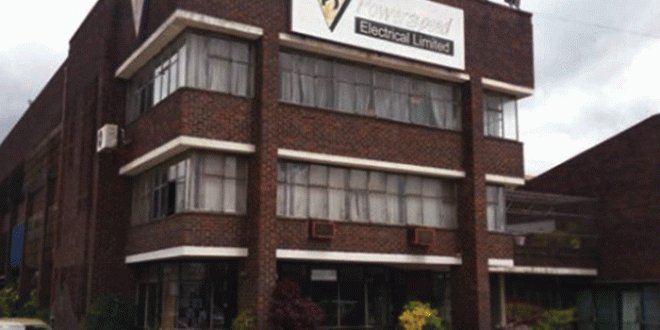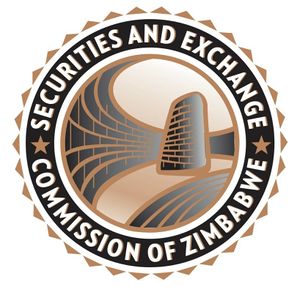‘RBZ must cough out USDs to anchor ZiG’
THE Reserve Bank of Zimbabwe (RBZ) must underwrite the process of de-dollarisation by availing sufficient foreign currency to meet the needs of importers to shield the Zimbabwe Gold (ZiG) from forex demand-driven pressures currently driving its depreciation on the black market, a monetary policy committee (MPC) member says.
This comes after the ZiG, introduced on April 5, 2024, to replace the inflation-weary Zimbabwe dollar, has recently been losing ground against the greenback on the parallel market, shedding a fifth of its value upon introduction.
This has the effect of bringing back memories of the Zimbabwe dollar, which lost more than 90 percent of its value before authorities replaced it with ZiG.
The local unit, backed by precious metals and foreign currency, now trades at anything above ZiG24/US$1 on the parallel market from about ZiG18/US$1 when the currency was introduced in April this year.
It has also lost some value on the interbank from ZiG13,56 about five months ago to roughly ZiG13,94/US$1.
Several factors have been cited for the exchange rate downslide, chief among them limited access to forex on the interbank market, lack of confidence in the domestic unit of account, limited range of use cases and controlled exchange rate.
Amid the acute mismatch between demand and supply for forex, the RBZ and Treasury remain the only major sellers of the little forex traded on the willing- buyer willing-seller interbank market, which is funded from the 25 percent export surrender portion.
The rest of the 75 percent held by exporters does not readily find its way into the market to meet the needs of importers given that rarely do the holders liquidate their forex in an economy where the US dollar is a legal tender and there is a yawning disparity between the official and parallel market rates.
Liquidating at the official exchange rate, which market participants suspect is controlled by an invisible hand, would be akin to selling at a huge discount to the true market rate.
Rather, companies keep the forex for their imports when the need arises, given the challenges associated with forex procurement on the market.
While authorities claim the use of local currency has increased in domestic transactions from about 20 percent in April to nearly 40 percent, the reality is that the currency remains an anathema in most informal sector transactions, which has driven the open market exchange rate and formal market prices higher.
Zimbabwe’s informal sector is estimated to account for at least 75 percent of the domestic economy, highlighting the urgent need to ensure the domestic currency is accepted across the economy to guarantee durable exchange rate stability.
Several measures introduced by Finance, Economic Development and Investment Promotion Minister Professor Mthuli Ncube in the 2024 Mid-Term Budget to support the currency, including payment of tax in ZiG on a 50-50 split for revenue exceeding 50 percent in hard currency, have yet to bear any fruit.
ZiG’s volatility comes at a time banks are sitting on more than US$3 billion in deposits, which are not lent out to the market nor traded on the forex market because there is no compelling or economic reason to do that.
This scenario points to structural issues and policy deficiencies.
Persistence Gwanyanya, a member of the MPC, told this publication in an interview that the country was paying the price for the unravelling dedollarisation, but he quickly pointed out that the central bank must chip in to finance the growing “wider use of ZiG in the economy”.
Zimbabwe is in a multicurrency regime, made up mainly of the US dollar and ZiG, which the Government has legislated to run until 2030, after which the country should switch to a mono-currency.
Earlier attempts to revert to a monocurrency, scrapped in 2009 due to hyperinflation, have repeatedly hit brick walls.
The Government is on record saying it has a dedollarisation plan that seeks to eventually revert to a monocurrency given challenges associated with full dollarisation for a country that has limited exports and access to external lines of credit as well as the restrictive nature of a foreign currency in influencing growth aspirations.
Gwanyanya admitted that the depreciation of the ZiG had resulted from panic among economic players now holding significant stocks of the domestic unit, leading to pressure and anxiety about the need to urgently dispose of the currency.
This has been worsened by the fact that several companies with huge balances of the ZiG and intending to import key raw materials and other critical requirements for use in their businesses have struggled to obtain the money on the formal market.
The central bank is on record recently admitting the build-up of pipeline demand on the interbank market, to which it responded by injecting US$50 million. The apex bank said it had intervened with nearly US$200 million on the market to meet the needs of importers since the new currency was launched.
Gwanyanya said the central bank had the financial capacity to keep intervening in the forex market to protect the ZiG from the demand pressures. He noted pronouncements by the central bank chief that the central bank now had about US$375 million in reserves backing the currency from about US$275 million in April.
“Recently, we have witnessed some temporary shock, but that temporary shock is settling now. Obviously, the temporary shock . . . was a result of dedollarisation unravelling faster than expected.
“Dedollarisation is good, but it has its punishment. It’s a punishment that we are happy to contend with and we should just underwrite that dedollarisation. You asked me, how do we restore stability?
“We restore stability by underwriting the dedollarisation, which is the one that is driving that instability.
What do I mean by underwriting the dedollarisation? We need to meet the foreign currency requirement of the market participants in the interbank market.
“This speaks to the injection of foreign currency, which is the essence of the reserves. I think it only speaks to why the structured currency was the best under the circumstances. We need to intervene and guarantee some measure of convertibility of the ZiG, which is because of its wide acceptance,” Gwanyanya said.
However, while economist and Small Enterprises Association of Zimbabwe chief executive officer Farai Mutambanengwe agreed that the ZiG convertibility issues were the major elephant in the room, he disagreed that the exchange rate instability was coming from the wider use of the domestic currency in the economy.
“There is a problem because you have the formal willing buyer willing seller market which isn’t delivering when people are trying to purchase foreign currency using their ZiG. At the same time, in the local market, people are no longer accepting ZiG or they are demanding increasingly higher rates because they are also finding out that once they have got ZiG there is nothing much they can do with it.
“In the past, there was a parallel market where someone could change their ZiG into US dollars, that market has been effectively strangled, so people are no longer finding a (ready) market for ZiG and what is happening is primarily the rejection of ZiG, which is resulting in people charging higher and higher prices to try and discourage ZiG sales,” he said.
Mutambanengwe said claims that the exchange rate was suffering from growing dedollarisation was incorrect because “if we are saying that there is greater acceptance of ZiG then we would not be seeing that exchange rate going up the way it is doing”.
“What is happening is that more and more people are actually rejecting ZiG…on the ground more people are increasingly rejecting ZiG, even the formal retailers that previously accepting it are now reluctant and that’s why they are also pushing up their prices in ZiG,” Mutambanengwe said.
Gwanyanya however said the central bank had the resources to support the stability of the ZiG on the interbank market, making reference to pronouncements by RBZ Governor Dr John Mushayavanhu that the apex bank now had about US$375 million worth of reserves backing the currency.
He, however, noted that significantly more forex reserve cover was required to ensure durable stability.
“It is there (financial capacity) you may have noted that the central bank has indicated that the reserves have gone up to US$375 million from US$285 million at the launch of ZiG. Obviously, ZiG reserve money has also been increasing, but still at US$375 million the reserve, special minerals and foreign currency provide adequate cover.
‘Despite the reserves providing adequate cover, there is volatility in the economy, the reserve money is unstable, it is changing hands many times. The cover has to be far much bigger than what we have,” he said.
Gwanyanya said there was panic among holders of ZiG, who now seek to dispose of the currency as soon as they hold it, which was building the pressures driving the depreciation of the currency on the black market.
In response to the challenges stemming from the apparent shortage of forex in the market, due to panic among market participants, Gwanyanya said the central bank had upscaled its interventions to calm down the market’s jitters.
Writing on his website recently, former legislator Eddie Cross said “The problems we face are multiple. We have issued a new currency, the ZiG, and stated that we would defend it at all costs.
“We are losing that battle and the currency is already 80 percent depreciated. If we do nothing fundamental, it is, like its predecessor is doomed.
“Arbitrage opportunities are back, the formal sector is in deep trouble, the informal sector, thriving.
People are holding onto their hard currency and dumping the ZiG. The latter is not convertible and the interbank market is tiny and cannot meet our needs for currency to import what we need,” he said.
He said the country needed US$150 million a week to import essentials, but the noted banks were struggling to provide just US$20 million.
Economist Brains Muchemwa said while the authorities had exhibited notable restraint in managing the domestic currency expansion of ZiG in order to stabilise the currency, the fact still remained that the domestic unit did not have a weighty anchor in the widespread functional demand to stabilise it.
“It is, therefore, imperative that the fiscal authorities should make ZiG fully convertible in all payments, including settlement of all tax obligations in order to broaden the demand side,” he said.-ebsinessweekl











